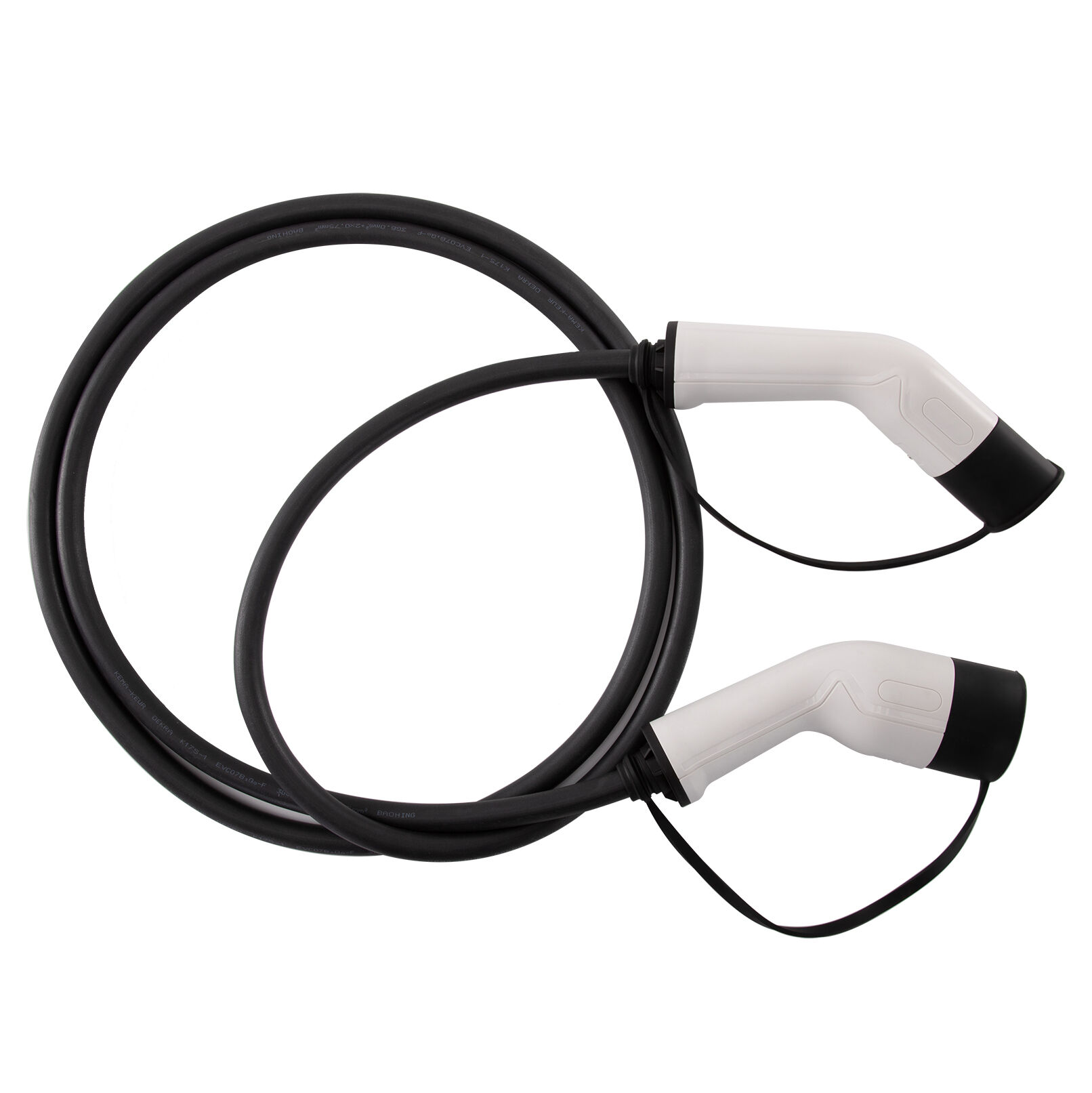Innovations in AC Charging Technology for Electric Vehicles
Understanding Innovations in AC Charging Technology for Electric Vehicles
AC charging tech for electric cars has come a long way, with Level 1 and Level 2 chargers standing out as major breakthroughs in recent years. Homeowners and businesses alike have benefited from these advances. The US Department of Energy reports something pretty interesting about Level 2 chargers from around 2021 - they can give EVs roughly 25 miles of range for every hour spent plugged in. That kind of speed makes all the difference when it comes to setting up charging stations at homes or offices where people spend most of their time anyway.
When looking at the electric vehicle scene overall, AC charging stations form a big part of what's actually out there on the ground right now. We're talking about everything from those wall boxes people install at home to the fast chargers dotting highways and city streets. Getting these different kinds of charging points sorted is really important if we want more people to switch to electric cars. Most folks worry about running out of juice before they reach their destination, and that fear stops many from making the leap. Having plenty of charging spots around means drivers don't have to stress so much about getting stranded somewhere. For everyday users, this network of charging points makes owning an EV feel practical rather than inconvenient. And let's face it, when daily driving becomes easier, it helps push us toward cleaner transportation solutions for our planet.
Key Features Driving Innovations in AC Charging
Smart charging stations represent one of the most exciting developments in AC charging technology today. What sets them apart is their ability to manage electricity consumption through sophisticated software that adjusts how fast vehicles charge depending on when people need it and what's happening with the electrical grid at any given moment. Users benefit from greater flexibility while helping maintain balance across the entire power network. Take nighttime hours for instance many systems automatically switch to lower power modes during off-peak periods when rates drop significantly. This approach cuts down on expenses and creates better conditions for incorporating solar or wind generated electricity into daily operations without overloading existing infrastructure.
Vehicle-to-Grid or V2G integration represents one of those game changing developments in AC charging systems. Basically what happens here is that electric cars can actually send power back into the electrical grid when they're not being driven around. This has pretty big implications for how we store energy and use renewable sources like solar or wind power. The ability to let EVs give some juice back to the grid helps keep electricity prices from swinging all over the place and creates another tool in the toolbox for managing our overall energy needs. We're starting to see this feature show up on both home chargers and those installed at businesses too. While there are still plenty of hurdles to overcome before widespread adoption becomes reality, the potential exists for creating a much greener energy system through these kinds of innovations.
Power charging tech is moving fast these days, letting people fill up their electric cars much quicker than before. We're seeing lots of new superchargers popping up everywhere now, which cuts down on how long folks have to wait around while their battery charges. This matters a lot whether someone has installed a charger at home or needs to stop off at one of those big highway stations during road trips. More people are getting interested in going electric because they know they won't get stuck waiting hours to recharge anymore. The latest improvements mean most EVs can grab enough juice in under half an hour, something that's becoming really important as more families consider switching from gas guzzlers to cleaner alternatives.
Exploring User-Friendly Designs for AC Charging Stations
AC charging stations with easy-to-use designs are changing how cities look, thanks to their small size and modular setup. With urban areas getting more crowded every day, good design matters a lot when space is at a premium. The new generation of charging points works well in different settings from apartment complexes to office parks. They save room without sacrificing functionality. Plus, they make life easier for people who drive electric cars, giving them reliable access to charging spots right at home or work without taking up too much valuable real estate.
Charging stations aren't just getting better at doing their job these days they're looking pretty good too. Many new models blend right in with whatever setting they're installed in whether that's a city sidewalk, shopping mall parking lot, or suburban neighborhood. When manufacturers put equal effort into both how something works and how it looks, people tend to accept them more readily. We've seen this happen already in several communities where attractive charging points have actually increased usage rates among electric vehicle owners. Good design matters because it makes technology feel less intrusive and more inviting, which is exactly what we need if we want everyone from apartment dwellers to rural residents to start embracing EV charging solutions.
Enhanced Safety Features in AC Charging Systems
Real time diagnostics and monitoring have become must haves for today's AC charging systems because they give both users and technicians important information about what's happening during the charge cycle. These kinds of systems catch problems before they get serious, so fixes happen fast and nobody gets stuck waiting for their car to charge at home. From the operator side, having access to all this data means maintenance work can be scheduled ahead of time rather than reacting to breakdowns, which saves money and keeps stations running smoothly most of the time. As technology continues evolving, we're seeing both home installed and business level EV chargers offer increasingly dependable and secure charging options no matter where someone needs to plug in their vehicle.
The safety stuff built into AC charging systems matters just as much as anything else when it comes to electric vehicles. We're talking about things like overload protection, fault detection, and those emergency shutdown buttons everyone hopes they never need to use. These safety measures really help keep things from going wrong and make sure EV fast chargers last longer than they otherwise would. When there's too much electricity flowing through the system, the overload protection kicks in and cuts off power before anything gets damaged either on the car side or at the charging station itself. Fault detection systems watch out for problems such as short circuits or grounding issues, which might not be obvious at first glance but could lead to bigger trouble down the road. And let's not forget about emergency shutdowns either these act as backup plans so operators can quickly stop everything if something looks risky during operation. Most people probably don't think about this stuff until they actually need it though.
The Future of AC Charging: Dependable and Sustainable Innovations
Looking ahead, AC charging systems have a big role to play in meeting worldwide sustainability targets. They help cut down carbon footprints while making better use of available energy resources. When connected to renewable power sources such as solar panels installed on rooftops or wind farms out in the countryside, these charging setups actually make our environment cleaner than before. The way they work helps reduce those harmful greenhouse gases we all hear so much about. Plus, it gives a real boost to building out electric vehicle networks across communities everywhere. Homeowners installing their own EV chargers find them increasingly attractive, and cities are starting to expand public charging station options too, which makes sense when looking at long term environmental benefits for everyone involved.
Wireless charging is emerging as something pretty exciting for AC charging systems. The idea itself could completely change the way we power up electric vehicles, mainly because it brings such convenience and easy access to charging spots. Some early models have shown that transferring energy works pretty well in homes and also at public locations. Imagine being able to charge an EV without plugging in any cables whatsoever! This would definitely make those fast chargers and commercial stations much more useful overall. When this tech gets better over time, it might just end up becoming part of normal life for EV owners everywhere, making the whole charging process feel much smoother no matter where someone happens to park their car.
Spotlight on Innovative AC Charging Products
New AC charging solutions are changing how EV drivers fuel up their cars these days, bringing more options, faster charging times, and better ease of use. Take the Smart Portable EV Charger as one good example. What makes this model stand out? Well, it works pretty much anywhere someone might need to charge their car. People can plug in at home during the night or find parking spots throughout town without worrying too much about finding compatible stations. The device actually handles both regular home outlets and those special Level 2 installations. Plus there's some neat tech built in too. Owners get updates right on their phone about charging status so they know exactly when their car will be ready. Whether parked in the garage or somewhere else entirely, folks stay connected to what's happening with their vehicle's battery level through simple notifications sent straight to mobile devices.
Double Power AC Chargers work great in places that see lots of foot traffic, with two charging ports so people can charge their cars faster. This matters a lot as more businesses install commercial EV stations across town. The chargers fit well in busy spots like shopping centers or office parks where several drivers might need to top up at once. They help push electric vehicle usage forward simply because nobody wants to wait forever for their car to charge when they're running late for meetings or picking up kids from school.
Column AC Charging Stations represent a smart option for cities where space matters most. These units can handle several vehicles at once, making them a must have component of any modern public infrastructure setup. What really works well is how these stations blend right into urban settings without taking up much room on the ground. They deliver fast charging speeds despite their compact footprint, which is exactly what busy metropolitan areas need. For city planners trying to roll out more EV charging points without tearing up streets or parking lots, these column based solutions make expansion both practical and cost effective in the long run.
Each of these innovative products addresses specific requirements, whether for home EV charging, faster public charging, or efficient commercial EV charger solutions, reflecting the diverse needs of modern electric vehicle usage.

 EN
EN
 AR
AR
 BG
BG
 HR
HR
 CS
CS
 DA
DA
 NL
NL
 FI
FI
 FR
FR
 DE
DE
 IT
IT
 PL
PL
 PT
PT
 RO
RO
 RU
RU
 ES
ES
 SV
SV
 TL
TL
 IW
IW
 ID
ID
 LT
LT
 SR
SR
 SK
SK
 SL
SL
 VI
VI
 ET
ET
 HU
HU
 MT
MT
 TH
TH
 TR
TR
 AF
AF
 MS
MS
 GA
GA
 CY
CY
 HY
HY
 AZ
AZ
 KA
KA
 LA
LA
 KK
KK
 UZ
UZ



